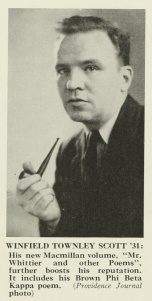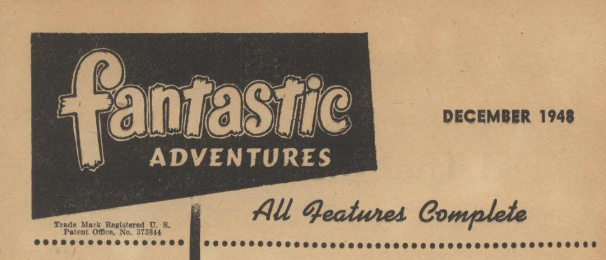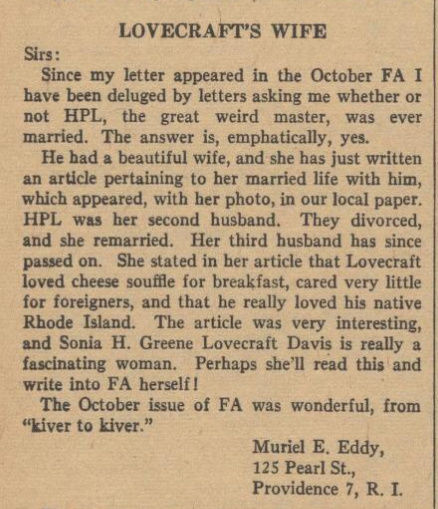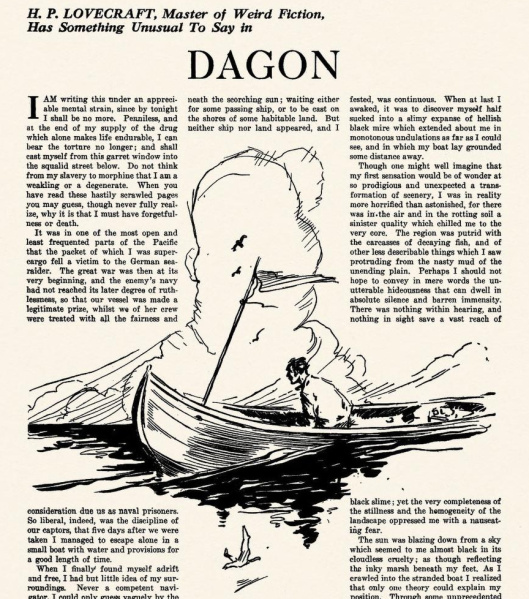I’ve found a photo of the first Lovecraft biographer, Winfield Townley Scott (1910-1968) in his prime. Likely to have been made in 1947 or 1948, at the time he was nearing the completion of around five years of writing about Lovecraft for the local newspaper and Books at Brown. The current online photos of him show an older and rather beaten-down-by-booze man.
Scott worked at the Providence Journal after his graduation from Brown, writing the “Bookman’s Galley” column in the 1930s. He later became the Literary Editor of the Providence Sunday Journal from 1944-51, before ceding the post to George F. Troy Jr.


The “’31” here indicates that he graduated from Brown University in 1931.
What follows is partly a summary review of the facts given in Scott’s biography, with my additional research and commentary.
Scott Donaldson, Poet in America: Winfield Townley Scott (University of Texas, 1972).
Winfield Townley Scott graduated well from Brown University, but the year was 1931. He stepped out of the gilded gates into the teeth of the Great Depression. As such he was glad of $15 a week offer to run and edit the book section of the Providence Journal. By the mid 1930s he was supplementing his book reviewing with income from movie reviews. He also worked as a broadcaster on the radio station then owned by the Journal. His radio work introduced him to the city as a known personality and voice.
Only in 1944 was his Journal salary raised substantially and at that point he formally took the title of Literary Editor, with his weekly column being re-titled “Bookends and Odds” to reflect the change. This major career event provides some professional context for his 1943-49 work on discovering Lovecraft. Both his radio work and his new standing as Literary Editor may partly help explain his ability to get ‘memoir letters’ (and from those relatively high up in Providence society), access to childhood friends, as well as access to medical records and the confidence of a doctor.
Scott also rather bravely used his newspaper to berate New England’s literary censors, as the local Watch & Ward committees escalated their scares into further legislative force via an alliance with activist district attorneys. Again, this provides yet more context for his interest in Lovecraft’s fiction. At that time literary censorship by the police and courts was alive and well, and would only start to fade away circa the late 1960s (though the Canadian customs officers maintained heavy seize-and-destroy censorship of print, such as underground comix, well into the 1990s).
Scott first knew of Lovecraft as a horror writer in 1943, though a Scott letter to The Acolyte (Fall 1944) shows that the newspaper had dealings with him as a poet while alive. I had read somewhere that Scott once had some “correspondence” with Lovecraft, but perhaps this was only an occasional factual exchange relating to some niggling point in a book review? Anyway, 1943 is a key date in his public interest, evidenced by a remark in his 1949 Books at Brown issue and his review of the second Arkham volume of Lovecraft’s fiction for the Providence Sunday Journal…

Curiously, this review does not appear in A Weird Writer in Our Midst: Early Criticism of H. P. Lovecraft. Perhaps S.T. Joshi didn’t want to stymie a possible book collection on Scott at some future date? (See below for my outline on the possible contents of such a book).

It’s well known in Lovecraftian circles that Scott wrote and published the important early Lovecraft articles “His Own Most Fantastic Creation: Howard Phillips Lovecraft” (1944) and “Lovecraft as a Poet” (1945), both published with revisions in his own Exiles and Fabrications and also to be found in the book-length collection Lovecraft Remembered and now the new collection of memoirs.
Less well known is that Scott also edited and heavily abridged a memoir of Lovecraft by his wife Sonia, published in the Providence Sunday Journal for 22nd August 1948. This later appeared, with a Scott introduction and still abridged, in the February 1949 ‘Lovecraft special’ double-issue of Books at Brown. In this Scott noted that its newspaper publication “brought forth letters of rebuttal as well as of corroboration”. Where are these letters now, from those who knew Lovecraft? Were they published? Has Brown University’s Scott Collection, with his huge archive of letters to “900 correspondents”, been checked for the original letters?
In 1951 a snippet in the Brown Alumni Monthly revealed him to be retiring from his post as Literary Editor to complete… “a book-length narrative poem on the Viking discoverers of America”. Posterity might have preferred to have a newspaperman-poet’s full-length biography of Lovecraft, made especially insightful by Scott’s own antiquarian bent, city pavement-pounding and regionalist sentiment. But as it is we have neither item, and it appears the Viking saga was either never written or was lost. By the early 1950s the general reading public anyway seemed to have less and less taste for fantasy and science-fiction, and I’d suspect that the poetic old ‘Vikings in New England’ notion of the 1920s and 30s — which had given birth to such fakes as the supposed ‘Vinland Map’ — had a fading allure for publishers in such an atmosphere.
Yet we should be grateful that Scott spent a number of years accessing rather difficult areas of Lovecraft’s life. Such as the medical records of Lovecraft’s mother, speaking to her doctor, and also getting letters from friends of the family along with newspaper-publication permission ➻. Then leaving us the first substantial and well-researched biographical text on Lovecraft. Without his boots-on-the-ground local work, several important aspects of Lovecraft’s life would be unknown today.
Some have idly insinuated that Scott might not have been a trustworthy observer of Lovecraft’s life. Well, his biography offers a partial answer. He was at that time a mature man of standing and deeply embedded in the city’s print news culture. Also in networks of literary scholarship and facticity. Here was a man who for the last 12 years had been called upon to scrutinise the detailed claims of others, as a weekly book reviewer, evaluating both scholarly and locally-known facts alongside their emotional tone and shadings. He was also a news man for the newspaper’s radio station. As such, we are entitled to assume that he took a local 1940s newspaperman’s pride in ‘reporting the facts’ and not embellishing them. It’s my feeling that if he had he been ‘making up’ claims, such as having seen the medical records of Lovecraft’s mother, then the informal ‘old boy’ and ‘old girl’ networks of the city would quickly have ‘called him out’ on the matter. As an active bisexual, newly engaged for marriage to a young heiress, he had a certain amount of standing to lose and little to gain from his curious interest in the then strange and mysterious Lovecraft. His anti-censorship stand and his published Diaries and memoirs also suggest a man scrupulously and personally dedicated to telling the truth, warts and all.
Yet he was foremost a poet and in the 1950s he was able to achieve his time-for-poetry due to his marriage to the lively young heiress Eleanor Metcalf, ten years his junior. He lived with her in Connecticut for a few years, until they went west in 1954 to join a colony of mostly visual artists in sunny Santa Fe. Part of the impetus seems to have been to give their young children an unsullied intellectual and physical landscape. They look the sullying of the landscape so seriously that they would sometimes go out at night and cut down the advertising billboards, then starting to mar the wide-open views. The Scotts also tried to en-noble their new home in more practical ways, lobbying for a college to move there and supporting the Santa Fe Opera — for which they started the youth programme. Again, we see a certain kinship here with Lovecraft — who had worked with the Irish youth to form an amateur journalism circle in Providence, who was mentor to so many young talents by correspondence, and who at the end of his life took the Jewish schoolboy Kenneth Sterling under his wing in Providence.
By now Scott was increasingly fighting the booze, but he kept his hand in with book reviews and wrote for The Santa Fe New Mexican. That title may be worth a quick check for overlooked 1954-64 reviews of Arkham books, perhaps, if someone has access to the relevant run of digitized issues. Those interested in his landscape sensibilities may be interested to know that Scott wrote a long essay on New Mexico, “A Calendar of Santa Fe”, detailing all its varieties and delights season-by-season. Looking at snippets of it, it sounds like the sort of item a local illustrator or graphic-novelist might usefully work into a new book today while interspersing it with a half-dozen local poems by Scott.
There is some potential for a Lovecraft-oriented Scott book, though I lack the finances to put it together. Here is my suggested outline:
* Memories of Newport in the 1920s, as an August 1951 memoir in the “Rhode Islander” section of the Providence Sunday Journal in which he penned “a love letter to Newport”. This was reprinted in his collection Exiles and Fabrications. Newport was where he had grown up as a child, before moving back to Haverhill for his teenage years (incidentally he mentioned elsewhere that Newburyport was considered ‘the seaside’ for Haverhill, presumably Plum Island). The dates here would approximately fit his Newport memories with the town’s ‘Lovecraft years’, circa 1920 — if Scott was recalling his town as seen through 10-year-old eyes.
* The Newport memoir was later followed by the full childhood memoir The Owl in the Hall. This was penned 1956 but only published in 1971 when its frank truthfulness meant it had small deletions made to accommodate family sensibilities. Some sources say it’s a full memoir, others a long poem, and I’ve been unable to see it.
* Any topographical poetry of Newport and Providence, relevant to Lovecraft.
* Relevant extracts from his biography (University of Texas, 1972) and his essay collection (Exiles and Fabrications).
* Memories of Haverhill and Newburyport in the 1920s (also Lovecraft places at the same time period).
* Any extracts from his well-regarded Diaries (published as a book in the 1950s), if he there describes the Providence that Lovecraft knew.
* “New England’s Newspaper World” (1943 essay).
* His 1943 Arkham Lovecraft book review.
* “His Own Most Fantastic Creation”, his essay on Lovecraft. With notes on what was revised for later re-publication.
* “Lovecraft as a Poet”. With notes on what was revised for later re-publication.
* Facsimiles of the above Lovecraft newspaper material, along with the twelve or so newspaper columns on Lovecraft, which Joshi’s Bibliography records as published 1944-49. It would be good to be able to read these in sequence.
* The Books at Brown journal had Lovecraft issues in 1944 and 1949. The 1944 issue is not scanned and online. The issues are:
March 1944, Books At Brown, Volume 1, No. 3. “The Haunter of the Dark: Some Notes On Howard Phillips Lovecraft”.
February 1949, Books at Brown, Scott’s foreword to his heavily abridged version of Sonia’s memories of Lovecraft. A 16 page double-issue.
* Any supernatural or R.E. Howard-like ‘Viking’ poetry (see above) he wrote.
* “The Tower at Newport” (essay, possible poetic musings on Vikings and New England?).
* Any other newly-discovered Lovecraft reviews (e.g. in The Santa Fe New Mexican, and he also wrote for the New York Herald Tribute in the 1940s).
* Suitable extracts from his letters (Brown University’s Scott Collection apparently has his archive of letters to “900 correspondents” and his 1944 handwritten journal), re: Providence and Lovecraft. “900 correspondent” suggests he had a further kinship with Lovecraft as an avid letter writer. Yet perhaps the bulk of the letters relate to his extensive book reviewing work?
* Scott also had a short letter to the ‘zine The Acolyte (Fall 1944), which shows he was in contact with the Lovecraft scene as it existed at that point.
* As an appendix, any of his reviews of 1930s horror movies that survive.
➻ Clara L. Hess, letter to The Providence Journal newspaper, 19th September 1948, later reprinted by Derleth (with some additions gleaned from an interview with her, probably conducted in late 1948) in the book Something about Cats and other Pieces, Arkham House, 1949, appearing there under the title “Addenda to H.P.L.”



























